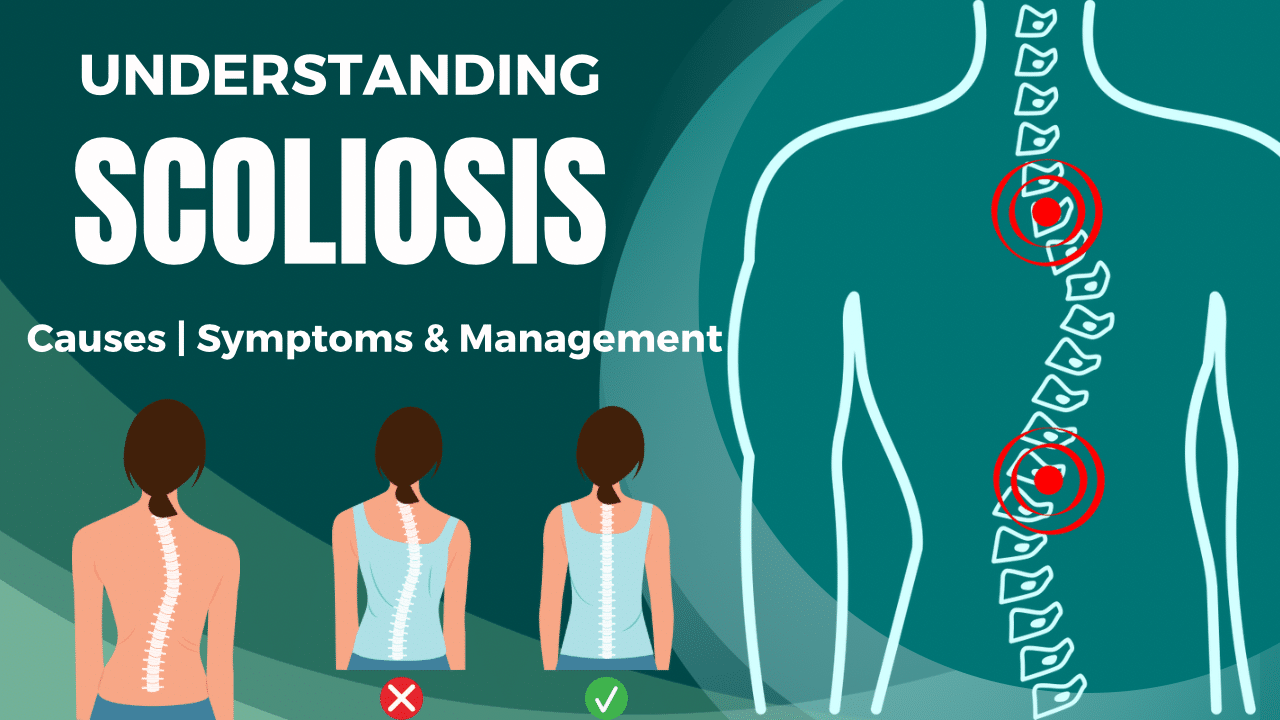Introduction : Understanding Scoliosis and Treatment Options
Scoliosis is a spinal condition that affects millions of people worldwide, regardless of age or gender.
While it often begins during adolescence, it can also develop in childhood or adulthood.
This article aims to provide a comprehensive overview of scoliosis, shedding light on its causes, symptoms and various treatment options available to those affected.
What is Scoliosis ?
Scoliosis is a medical condition which is characterize by an abnormal curvature of the spine.
In a healthy spine, when viewed from behind, it appears straight.
However, in individuals with scoliosis, the spine may curve to the left or right, forming an “S” or “C” shape.
This curvature can be due to a variety of factors and can affect different parts of the spine.
Causes of Scoliosis: Understanding Scoliosis and Treatment Options
Idiopathic Scoliosis:
It is the most common type of scoliosis and typically develops during adolescence.
The exact cause is unknown, but it may be link with genetic factors.
Congenital Scoliosis:
This type of scoliosis is present at birth and results from abnormal spinal development during fetal growth.
Neuromuscular Scoliosis:
Caused by underlying neuromuscular conditions such as cerebral palsy or muscular dystrophy, this form of scoliosis is often more severe.
Degenerative Scoliosis:
This typically occurs in adults as a result of age-related wear and tear on the spine, leading to a gradual curvature.
Symptoms of Scoliosis:
The symptoms of scoliosis can vary patient to patient depending on the severity of the curvature.
Common signs and symptoms include:
- Uneven shoulder or hip height
- A visible curve in the spine
- Uneven waistline
- Back pain or discomfort
- Fatigue, particularly after prolonged periods of sitting or standing
Diagnosis:
If you or someone you know is experiencing these symptoms, it’s important to seek medical evaluation.
A healthcare professional, typically an orthopedic specialist, Physiotherapist will conduct a physical examination and may use imaging tests such as X-rays to confirm the diagnosis and assess the degree of curvature.
Treatment Options:
The appropriate treatment for scoliosis depends on several factors, including the age of the patient, the severity of the curvature, and the underlying cause.
Common treatment options include:
- Observation: In mild cases, especially with adolescents who are still growing, regular monitoring may be all that is required.
- Scoliosis bracing: For moderate cases of scoliosis, a brace may be recommended to prevent further curvature progression during growth spurts.
- Physical Therapy: Physical therapy exercises can help improve posture, strength, and flexibility, reducing pain and discomfort associated with scoliosis.
- Surgery: In severe cases or if the curvature continues to worsen, surgical intervention may be necessary. Surgery involves spinal fusion, where metal rods and screws are use to straighten the spine and stabilize it.
Conclusion:
Scoliosis is a common spinal condition that can have a significant impact on an individual’s life.
Early detection and appropriate treatment are crucial in managing this condition effectively.
If you or someone you know is experiencing symptoms of scoliosis, consult a healthcare professional for a thorough evaluation and personalized treatment plan.
With the right care and support individuals with scoliosis can lead healthy and fulfilling lives.
